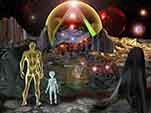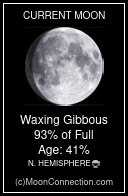The following article is taken from a book titled: “Amazing Facts in a Marvelous World” edited by Vincent Starrett (The University of Knowledge Wonder Books, Glenn Frank, Editor-in-Chief University of Knowledge, Inc., Chicago 1931/1941)
Hypnotism
Hypnotism and mental suggestion, though constantly being “rediscovered” by men like Mesmer and Coue, have been known and practiced for many centuries.
From early times they have been exploited, by leaders of primitive cults, medicine men, fakirs of India, Greek oracles, and the sybils of Rome alike.
In many savage regions of the earth, in dense jungles and caves, a crude and unscientific form of mass hypnotism is a frequent phenomenon. Men and women of primitive tribes crouch around fires. The light of the flames, rising and falling, walls them off from the impenetrable darkness around them. Some of the men rub the palms of their hands over taut goatskin drum-heads, producing a deep, rhythmic roar which surges with the mounting excitement of the hearers. One by one the squatting figures rise and start bobbing up and down on the balls of their feet, in time with the haunting, maddening rhythms of the drums. Faster and faster they sway, until their eyes protrude, their lips are covered with foam, and their bodies glisten with rolling sweat under the ruddy firelight.
Performances of this kind, wholly unreasonable, but charged with emotional ecstasy, are demonstrations of hypnotism. Usually they are regarded by the people thus affected as having a supernatural origin. The tom-tom dancers of Africa and Haiti, no less than the cultists of more civilized nations, feel that they have been pervaded in body and soul by powerful forces, divine or diabolical. In the past such phenomena were often believed to be induced by the devil, and people, who fell into hypnotic trances were sometimes executed as witches and sorcerers.
Let us follow the progress of this “black art” to the year 1777 in Paris. The world of fashion is throbbing with excitement. A new thrill has been discovered by a former Viennese physician, one Friedrich Anton Mesmer.
Let us enter Mesmer’s elegant parlors in the Place Vendome. Mirrored walls flash blinding rays; huge and complex tubs are set into the floor, filled with bottles of “electrical fluid”. From these bottles extends a complicated system of wires with handles, held by semi-hysterical men and women crowded close together. Into this tense expectancy steps Mesmer the Master in a robe of embroidered silk. He walks about stroking patients soothingly, stares fixedly into their eyes, makes mysterious passes in the air, and relaxes their nervous tension with a few deft touches. Within a very short time every brand of emotion is on display. Men and women laugh, weep, and embrace each other.
At that time the star of Mesmer the Magnetizer was at its zenith, but was not to remain there long. A group of learned men, including a distinguished American visitor, Benjamin Franklin, reported that Mesmer was a charlatan. After having been exiled from Vienna for practicing his mystic art, Mesmer was similarly treated by the government of France.
It was not until 1842 that James Braid, an English surgeon, took Mesmer’s “magnetism” out of the dark region of necromancy. Braid discovered that hypnotism was produced by concentration of the visual powers, absolute repose of the body, and a fixing of the attention. Braid also found that hypnotic sleep is not always of the same quality, but varies from a light dreaming state to a deep coma. This produced a revival of interest in France in the whole subject of hypnotism and suggestion. After extensive study, a famous school of hypnotism was founded at Nancy, at which many of its fundamental principles were established.
Hypnosis Put To Work
It was not long before the medical uses of hypnotism were discovered. The reports from far-off India that a certain Dr. Esdaile was using hypnotism as a means of anesthesia were verified by men of science. Dr. Esdaile performed the most painful and delicate operations by inducing the cataleptic state. Tumors were removed, legs were amputated, and portions of bone were sawed away. All this was accomplished without signs of pain, during the hypnotic trance. Shortly after such operations the patients would awaken in the most natural manner, stretch their arms, yawn, and rub their eyes. In reply to questions they would say that they had enjoyed a good sleep and felt rested, and were surprised to learn they had just been operated upon.
In a typical hypnosis session as practiced at present, the subject sits upright in a straight chair, fixing his eyes on the hypnotist’s face, or on a point of light. In the hush of the room is heard the monotonous, droning voice of the hypnotist: “You are falling into a deep, deep sleep. You are falling into a deep, deep sleep...deep, deep sleep...” The sitting subject blinks at first, then his face loses all expression, and at last his eyes become glazed and his body rigid. With will almost completely obliterated, his mind and body are blank pages on which the hypnotist can write the emotions and sensations that he desires the unconscious person to experience.
The hypnotist says to him: “Wipe the insects off your face,” and he attempts to comply. When told that the room is filled with glorious music, he listens in rapt attention; and applauds wildly when told the concert is ended. “Now you will eat this delicious apple,” the hypnotist tells him, and hands him a raw onion. He eats it with evident relish, showing no signs of discomfort. All these phenomena are produced by the mental suggestions of the hypnotist.
If the subject is told that his flesh is insensible to pain, his skin may be pierced with pins without his flinching or crying out. If his arm is raised to a horizontal position and he is told that he cannot move it, it remains rigid as an iron bar for much longer periods than he could normally hold it up without excruciating pain. Or the subject’s power of mental concentration is immensely enhanced at the suggestion of the hypnotist. He is told, for example, that he must retain in mind a long series of fifteen or more unrelated digits, so as to be able to repeat them in the same order later. As they are recited to him, the subject listens intently, with an effort of memory that is almost painful to watch. Then, after a considerable interval during which other demonstrations occur, if the subject is asked to repeat the list of numbers, he names them rapidly and correctly, with the glib accuracy of a phonograph. [Note: this was written in 1938, hence the reference to phonograph.]
One of the most interesting phenomena of hypnotism is post-hypnotic suggestion, by means of which psychiatrists often treat their patients. During hypnosis the patient’s mind is given so strong an impression that his beliefs and behavior are affected for hours or days after he is restored to normal consciousness. For instance, a drunkard is told that he no longer craves alcohol, in fact that it is now distasteful to him. After the hypnosis session is at an end, he finds that he has indeed been freed of alcoholism, at least for some time after the treatment. The same therapeutic means may be used to help patients afflicted with abnormal fears and obsessions.
Though hypnotism is neither as mysterious nor as difficult to induce as the general public thinks it, yet is should be borne in mind that it is a bad toy to play with. It may be dangerous in the hands of the inexpert, and anyone who permits himself to be hypnotized by a person who is not a competent and reliable psychologist or doctor is inviting trouble.
(end)






































